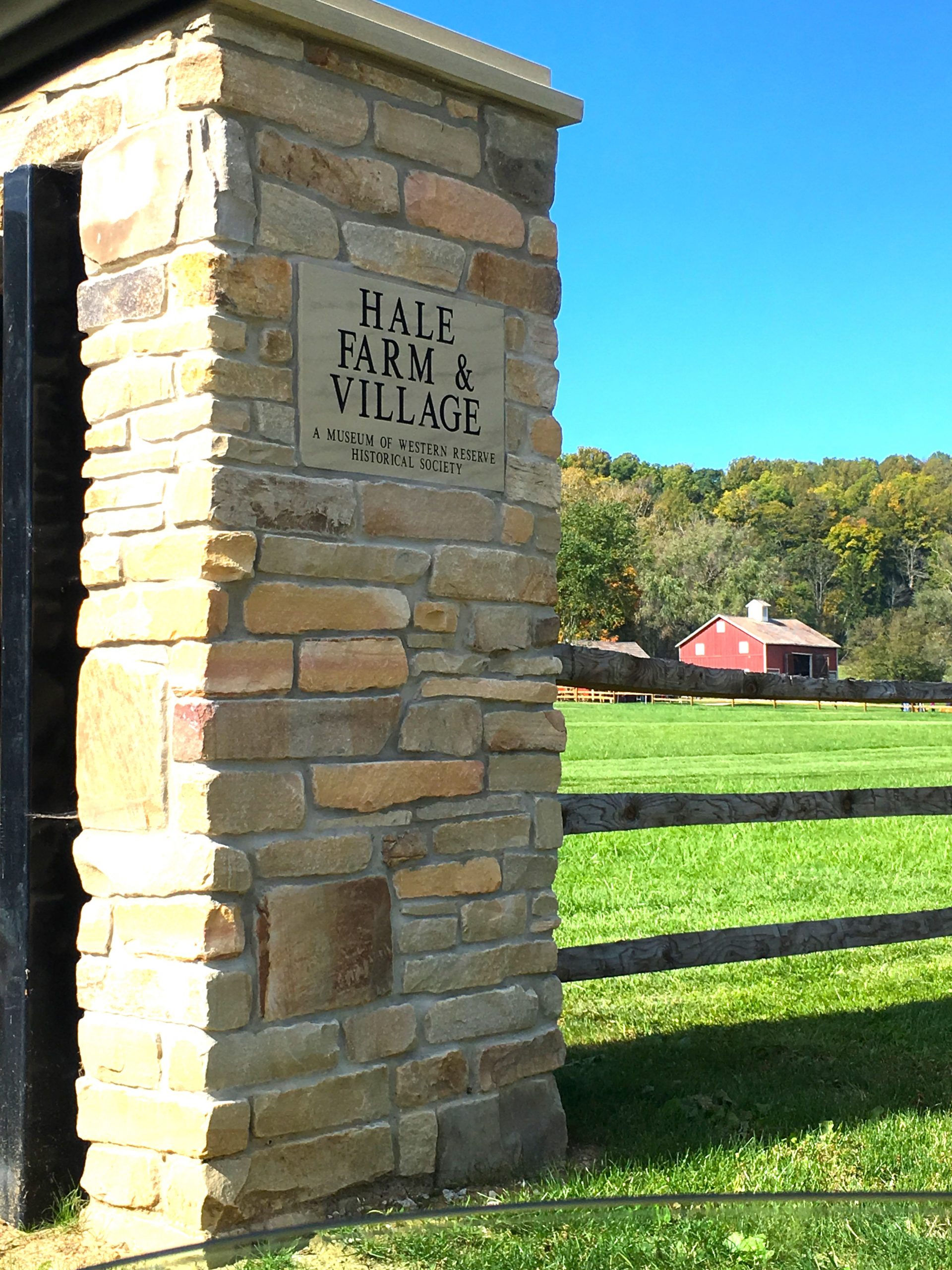
Fall in Ohio is magnificent for watching the leaves change, so I decided to take a road trip to Hale Farm & Village to enjoy the scenic fall leaves and to learn more about farm live in the early 19th century. The farm is a historical property within the Cuyahoga Valley National Park and was previously owned by of Jonathan Hale. The addition of 30+ structures had been added over the years to complete the village which is locally known as Wheatfield.
I purchased my ticket at the Welcome Center, gathered some additional information about the grounds and exited the back of the main farmhouse. Vendors were selling large pumpkins to visitors who would decorate them for the fall season. Young children happily shared what they would be wearing for Halloween while their parents sorted through large boxes of watermelon.
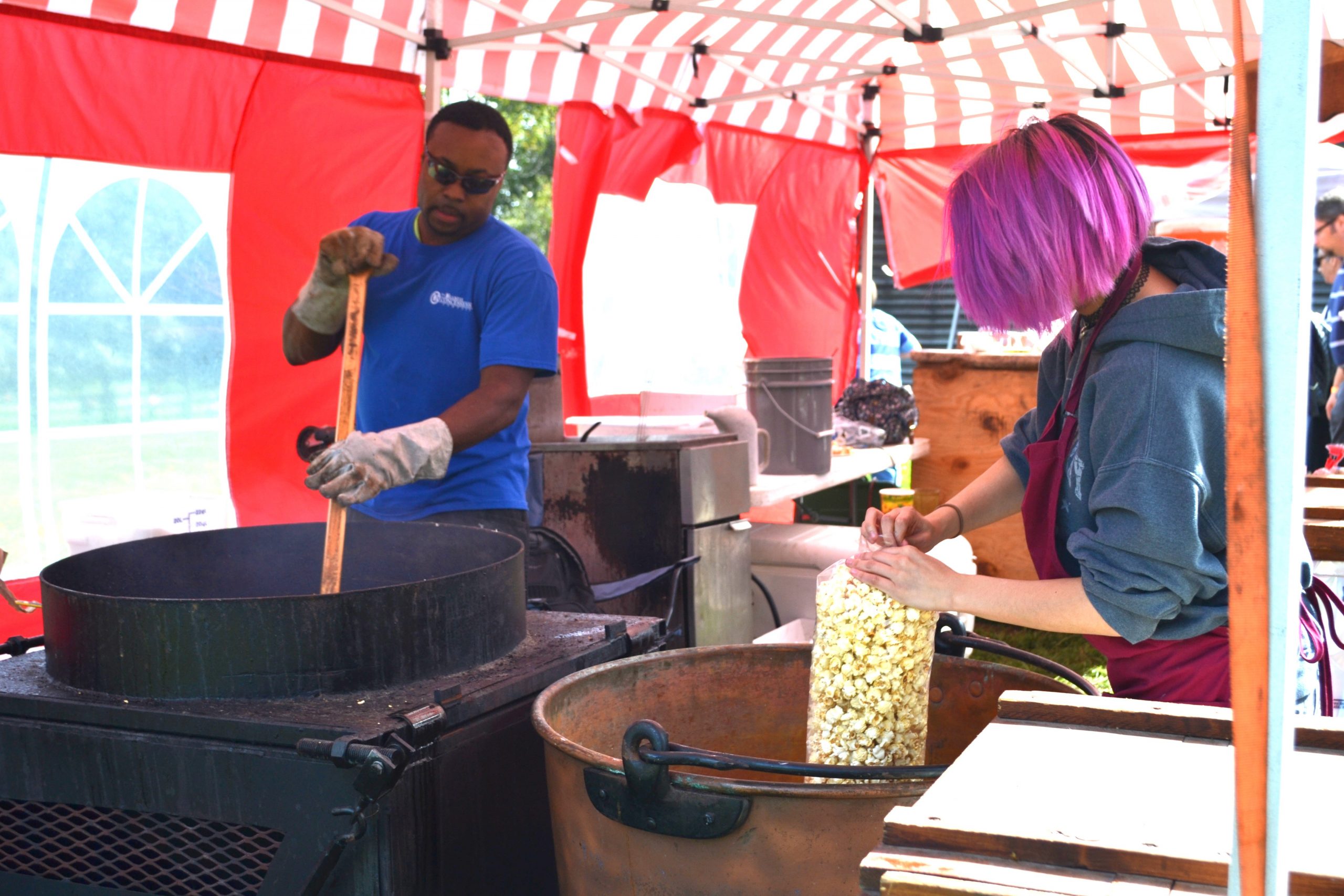
From the moment I stepped outside of the farm house, I could smell the tempting aroma of kettle corn made by volunteers who were raising money for local charities. A young man wearing gloves stirred the popcorn in a large vat to keep it from burning while a young lady waited for a batch to cool down before placing the popped corn in plastic bags. There was a line of visitors waiting to purchase a bag or two.
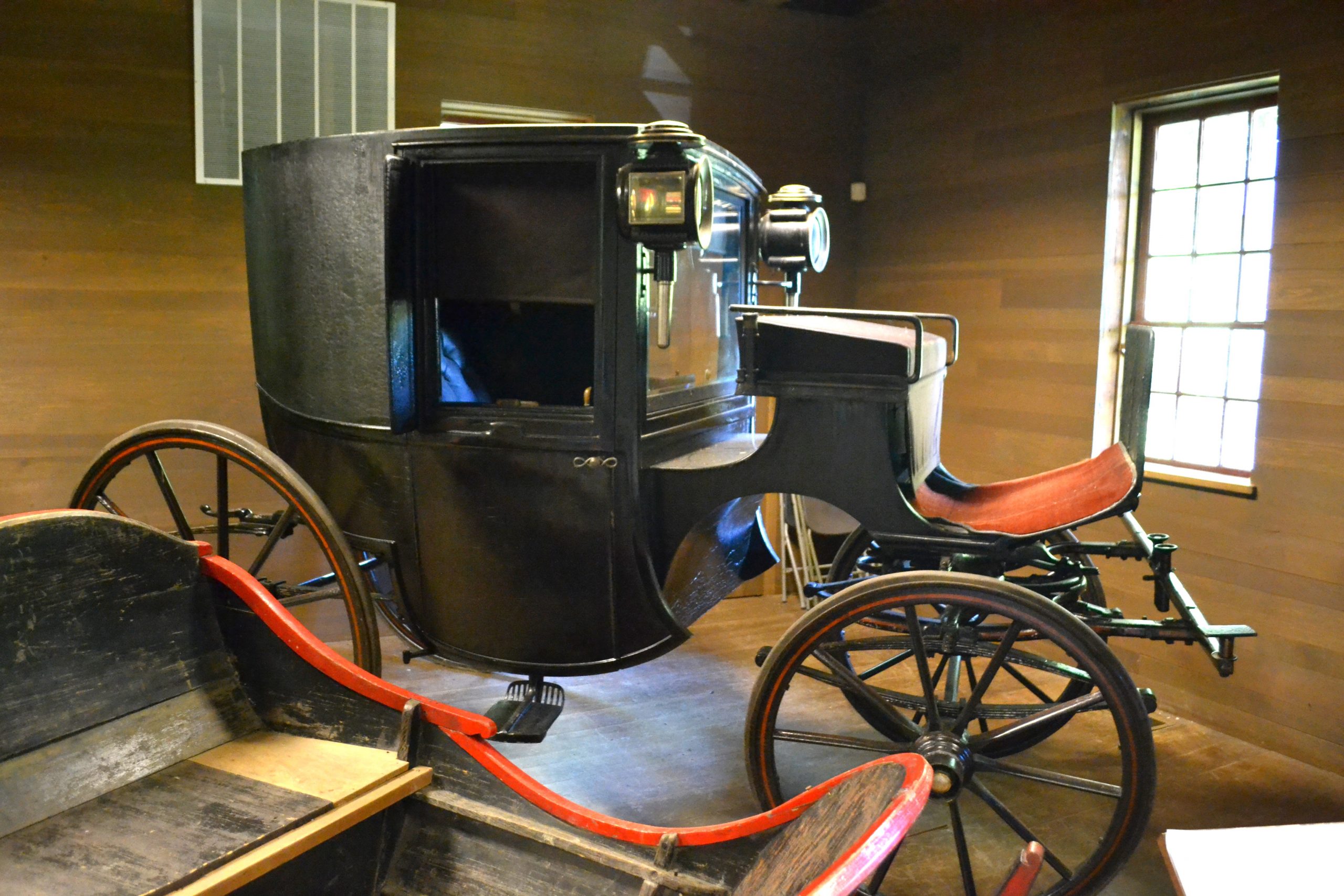
Following the map, I started my walk towards the left, stopping at a large, red barn. I shuffled through the damp leaves towards the John McAlonan Carriage Manufactory exhibit where several antique carriages were on display. The posted placard explained that the four carriages were called cabriolets with fold-down tops and were manufactured by the George J. Warden & Company from Cleveland, Ohio. Named after England’s Queen Victoria, the convertibles were popular after the 1870s.
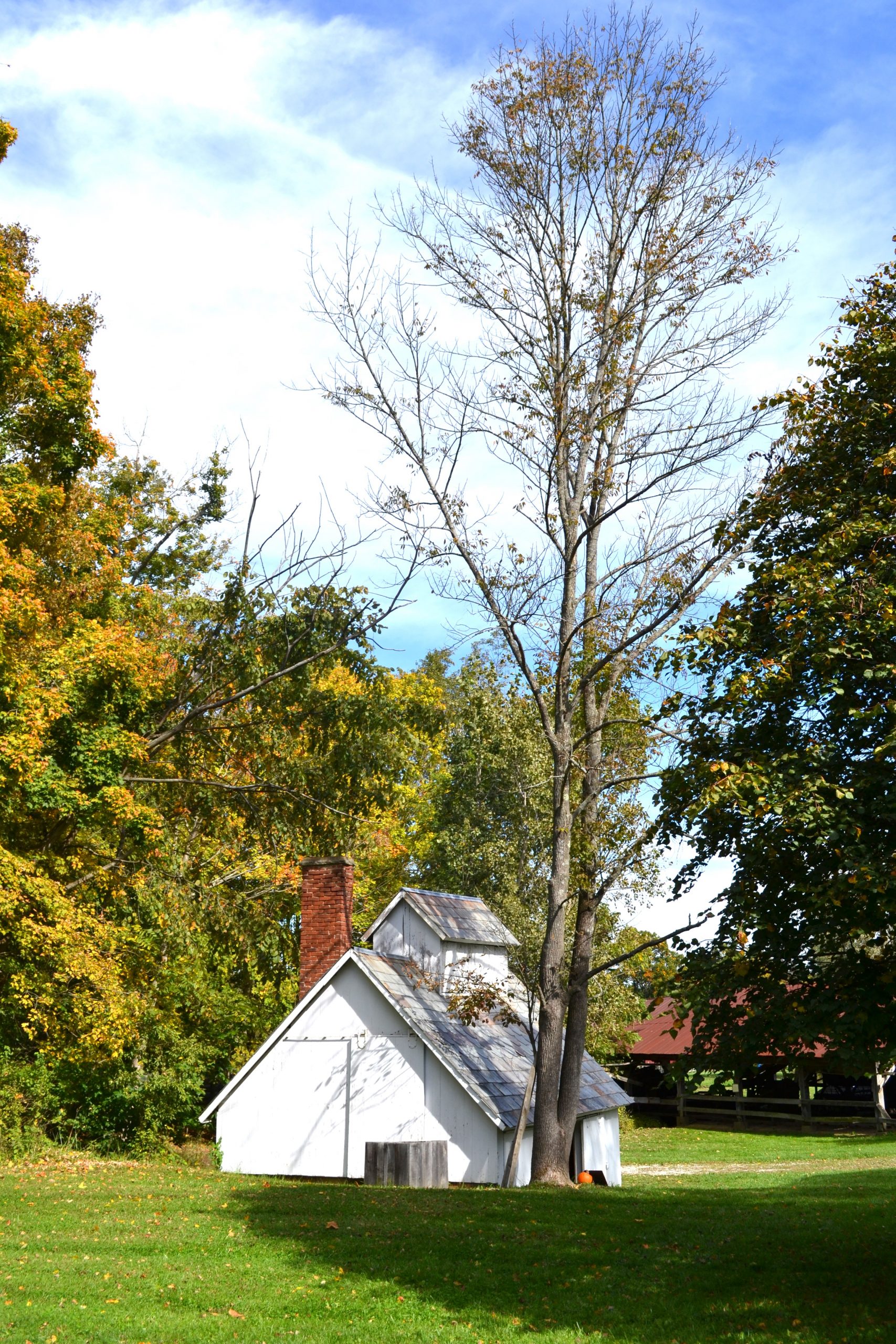
The white single story Sugar House was the next stop on my tour of Hale Village. Entering through the side door was Josie, a period dressed attendant who was showing visitors how to make small candles. Using a thick string, she was dipping one of the ends into the hot wax, sitting over an open fire and gently draping them over a string to cool. Each candle was available for purchase at $1 per piece and proceeds would be donated towards the upkeep of the Village and Farm.
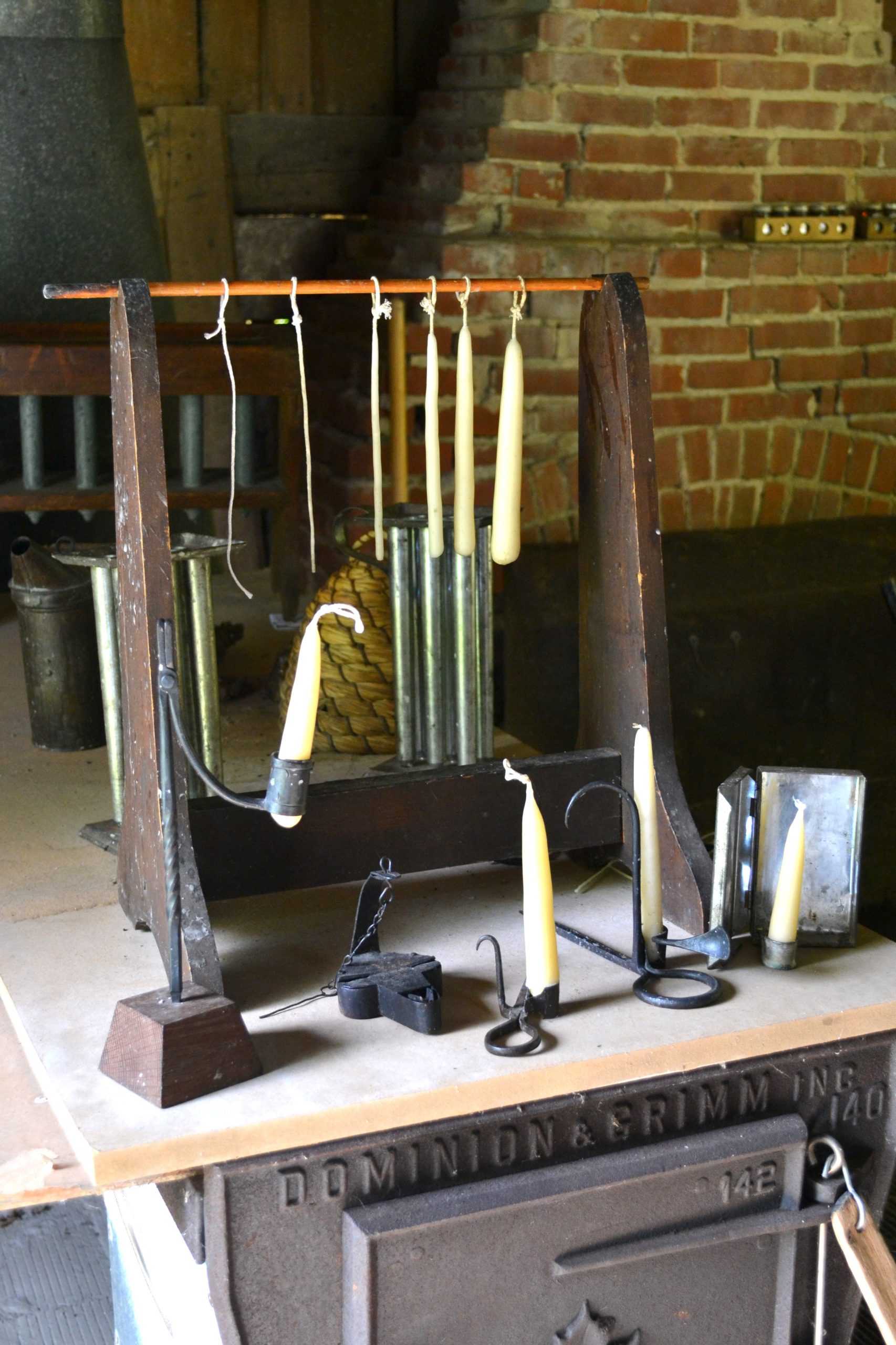
The Sugar House was built by the Hale family at the start of the 20th century. Charles Oviatt Hale continued his grandfather’s tradition of collecting sap to produce nearly 200 gallons of maple syrup from the 20 acres of maple trees surrounding the farm. Today the farm uses modern technology to continue this tradition using a wood burning parallel flow evaporator to process the sap into syrup each February.
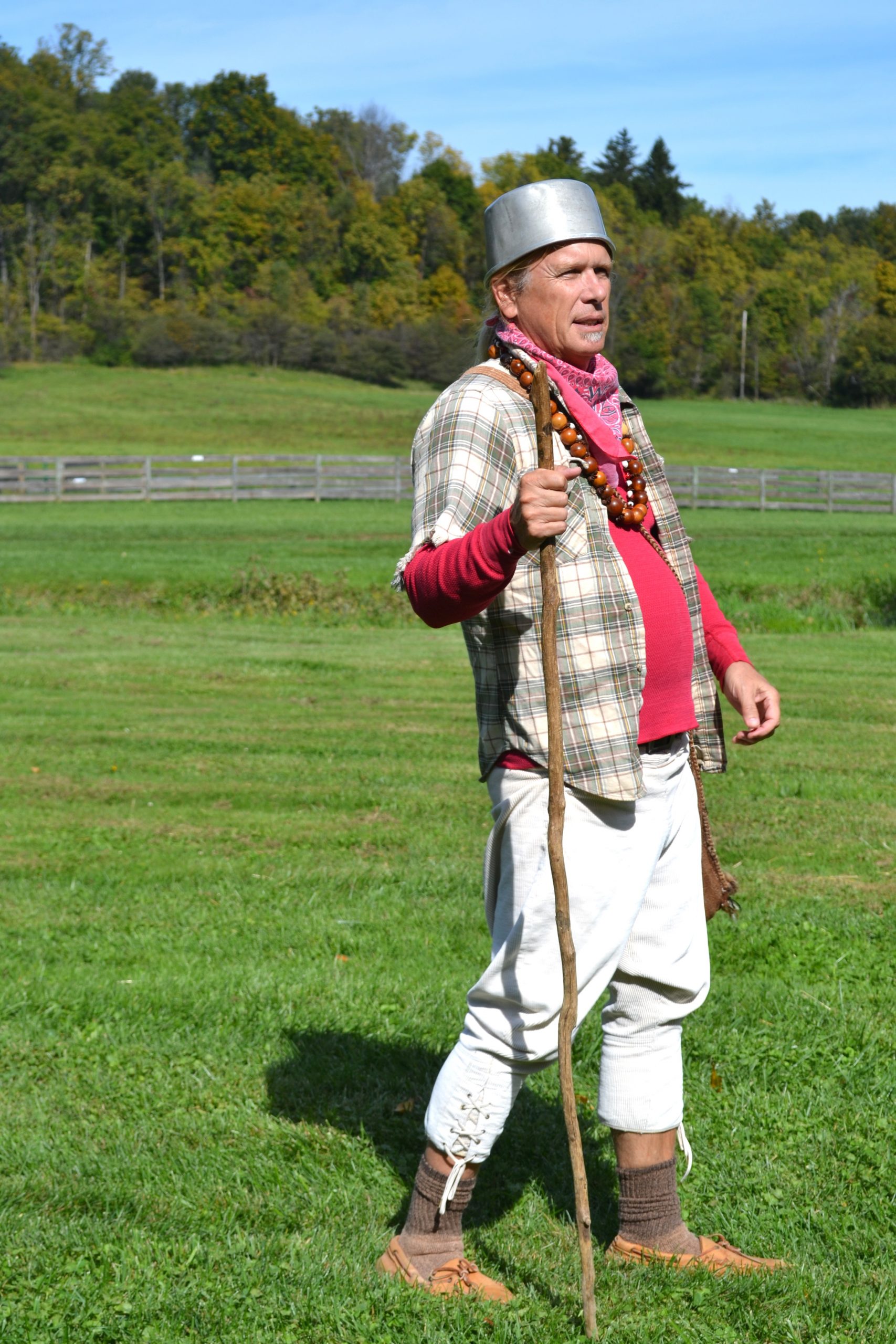
On my way to the quaint log cabin home of the Hales, I passed an empty lean-to. Overgrown with grass and in need of repair, it may have provided shelter for some of the family’s farm equipment. Nearby, in the open field, I couldn’t help but notice a middle aged man with a saucepan on his head. A crowd had gathered around him as he discussed the importance of conservation and said he was willing to plant some apple trees on the property as the children giggled at his “hat”.
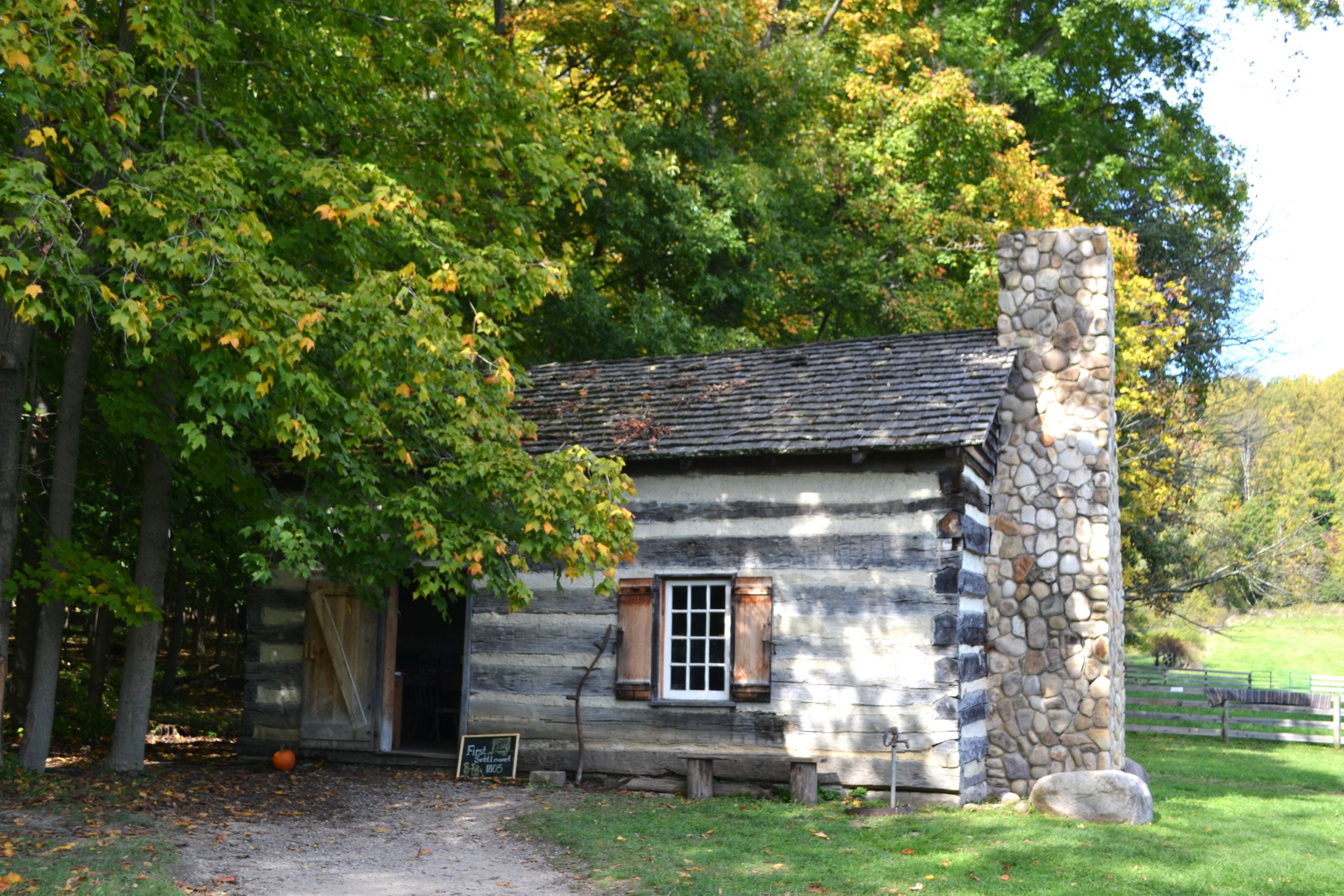
Passing an overrun garden with weeds and dead plants, I arrived at the one room log cabin sitting beneath a maple tree.
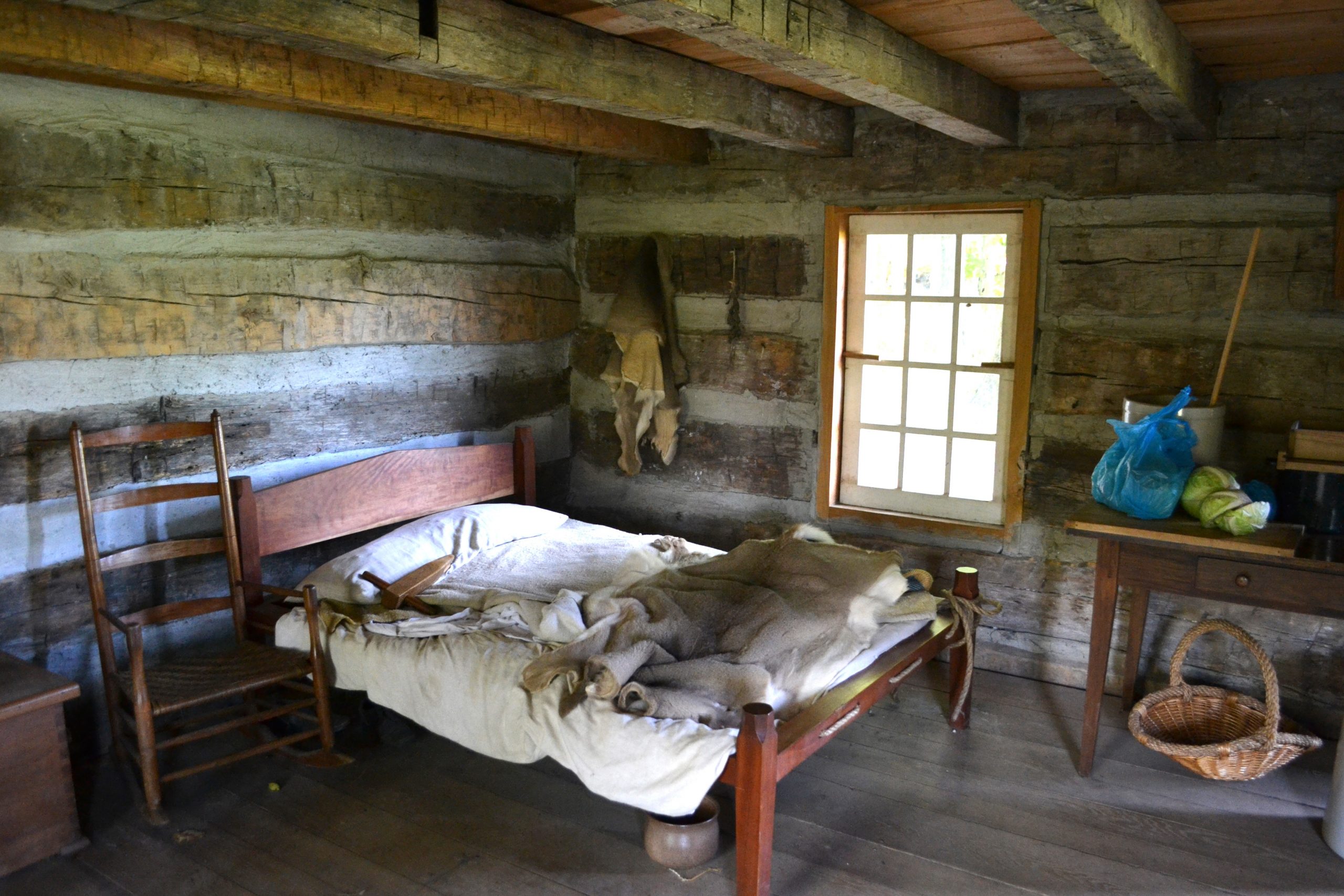
In the corner sat a twin-sized bed that had been made up with a feather mattress and an animal hide. A long side table had been placed to the right of a 12-paned window lighting up the space with natural light. While many homes of its time would have left the dirt floors, this home’s wooden floors were perfect for keeping out forest animals and rodents.
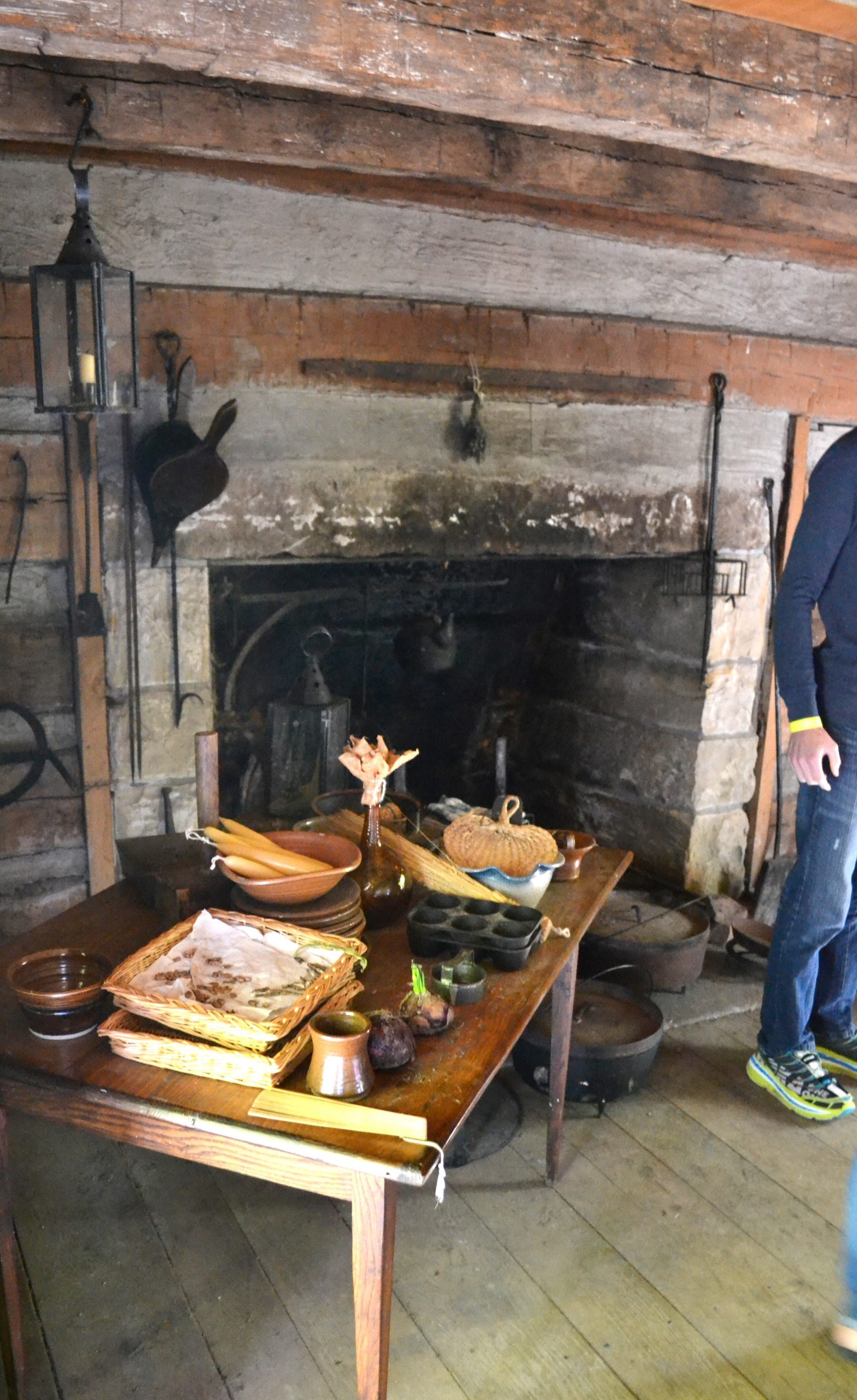
A large, well-used fireplace had been built to the far right of the home and with evidence of smoke damage to the stones. The stonework was absolutely perfect, built to the top of the roof. The hand-cut logs were stacked on top of each other with a thick layer of clay in between could be seen from the inside while the outside was reinforced with tar. The nearby outhouse resembled the log cabin and sat a few feet from the family home.
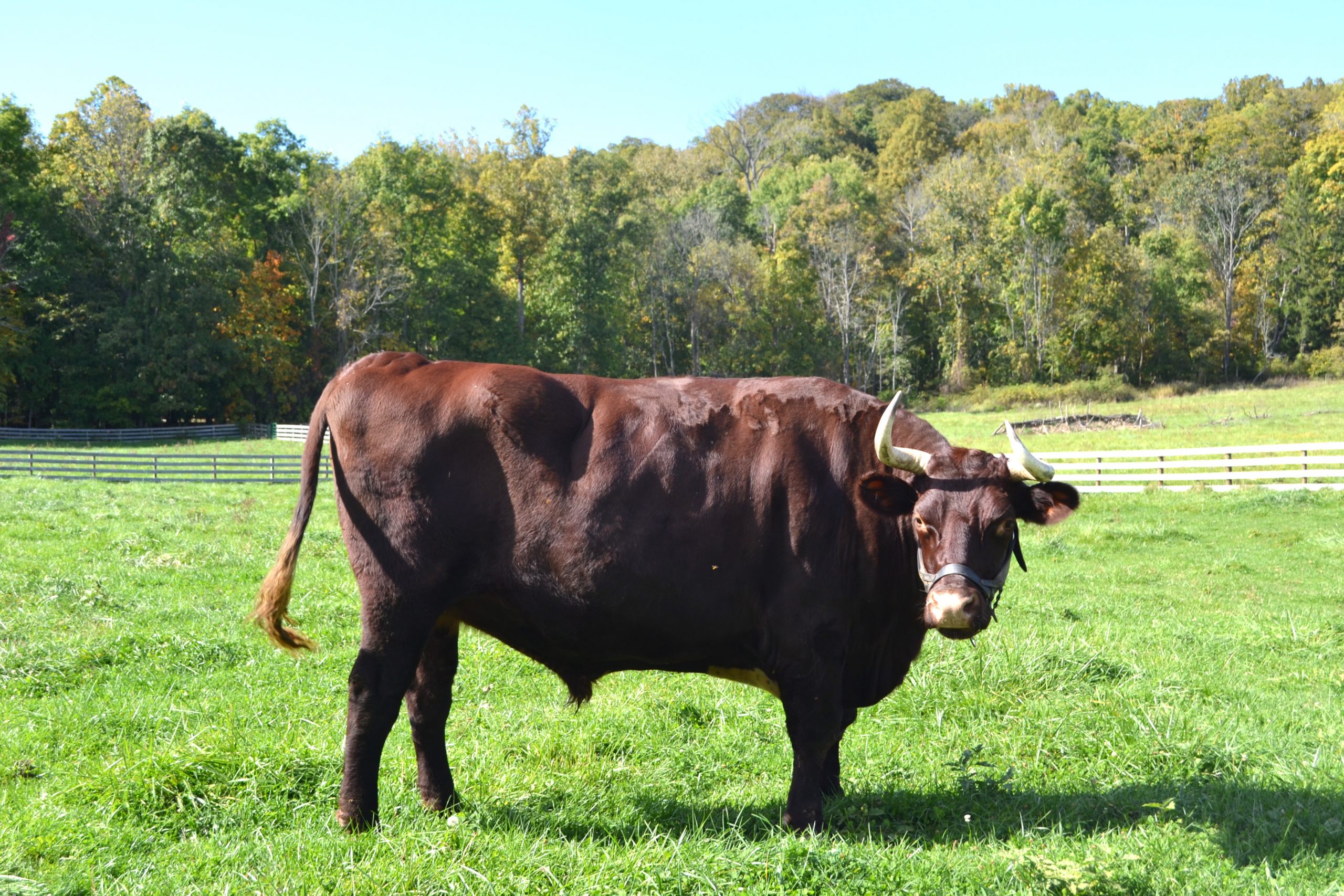
Nearby was a fence surrounding a large pasture with a noticeable tree line in the distance. Approaching the fence, I was searching for farm animals as I strolled towards the red barn, one of several barns on the property. I was happy to see a muscular, chocolate brown steer giving me hope that I would see some additional barnyard animals.
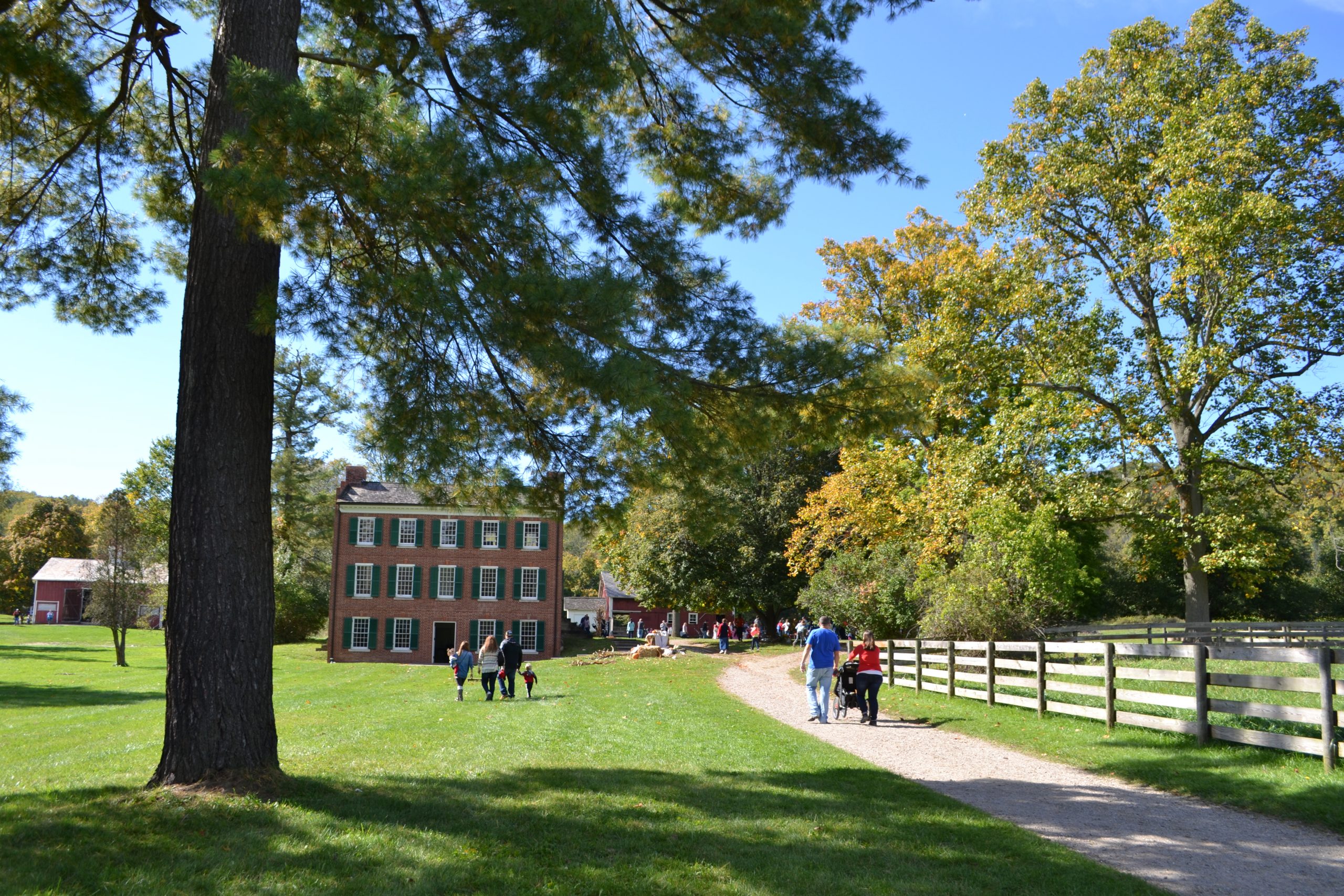
Jonathan Hale moved to Ohio from Connecticut in 1810 and settled in Bath Township. A few months later, his wife and three children arrived, moving into a log cabin built by a local squatter. Several years later, Hale completed the green shutter, three-story brick home around 1825 and lovingly referred to it as “Old Brick”. The Hale home is considered to be the second brick house built in the Cuyahoga Valley.
The first floor was a large open space that included a great room, kitchen and dining area. The second floor acted as a formal space used for special occasions such as a parlor and formal dining room. The third floor was originally set up with six small bedrooms but later converted into fewer large bedrooms.
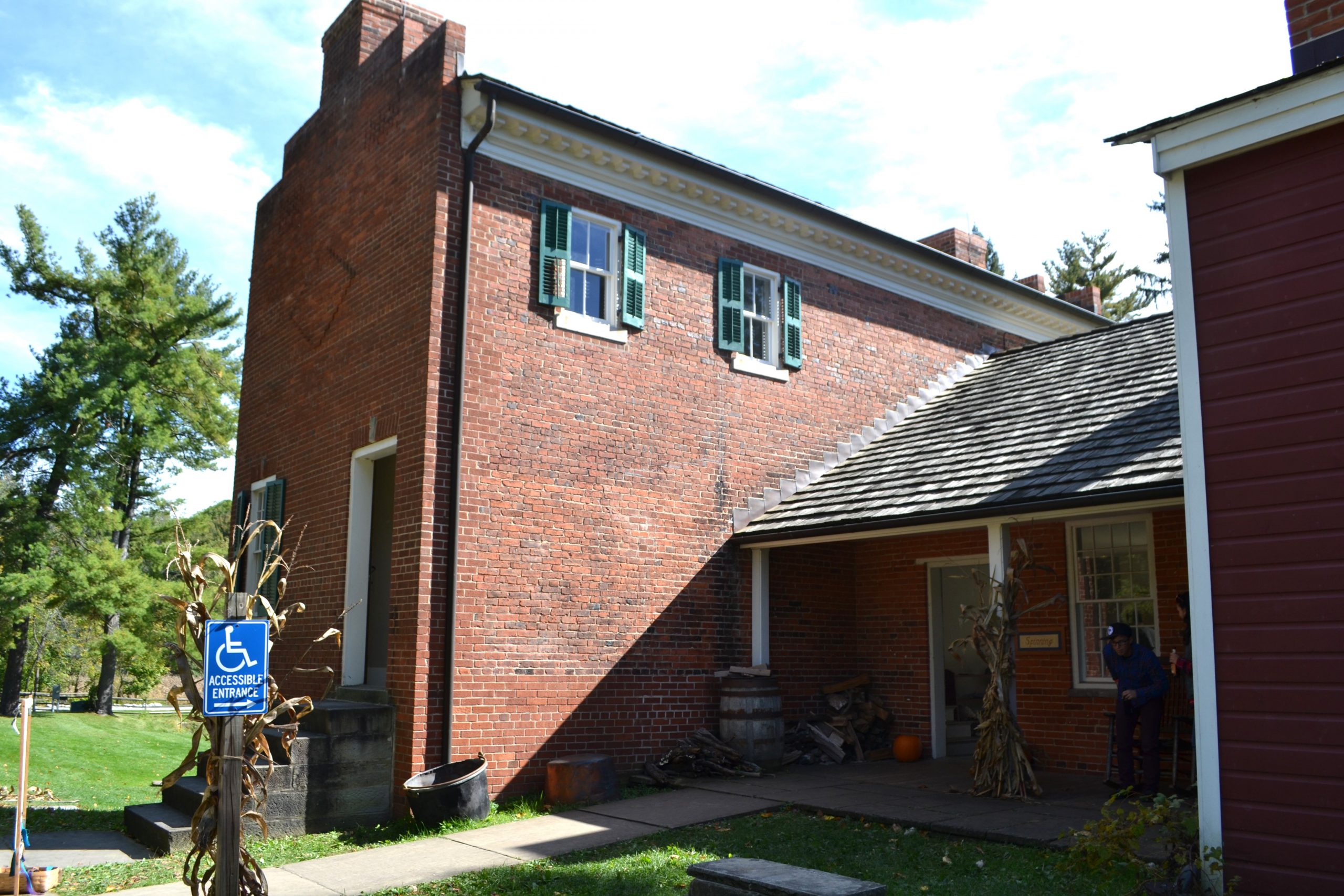
When Jonathan’s son Andrew married in the 1830’s, he built a small home across from the Jonathan Hale estate. Later, Andrew’s home was moved and attached to the original Hale home, labeling it the “South Wing”. To store coal to heat the home as well as additional supplies, the family added a “North Wing” to the structure.
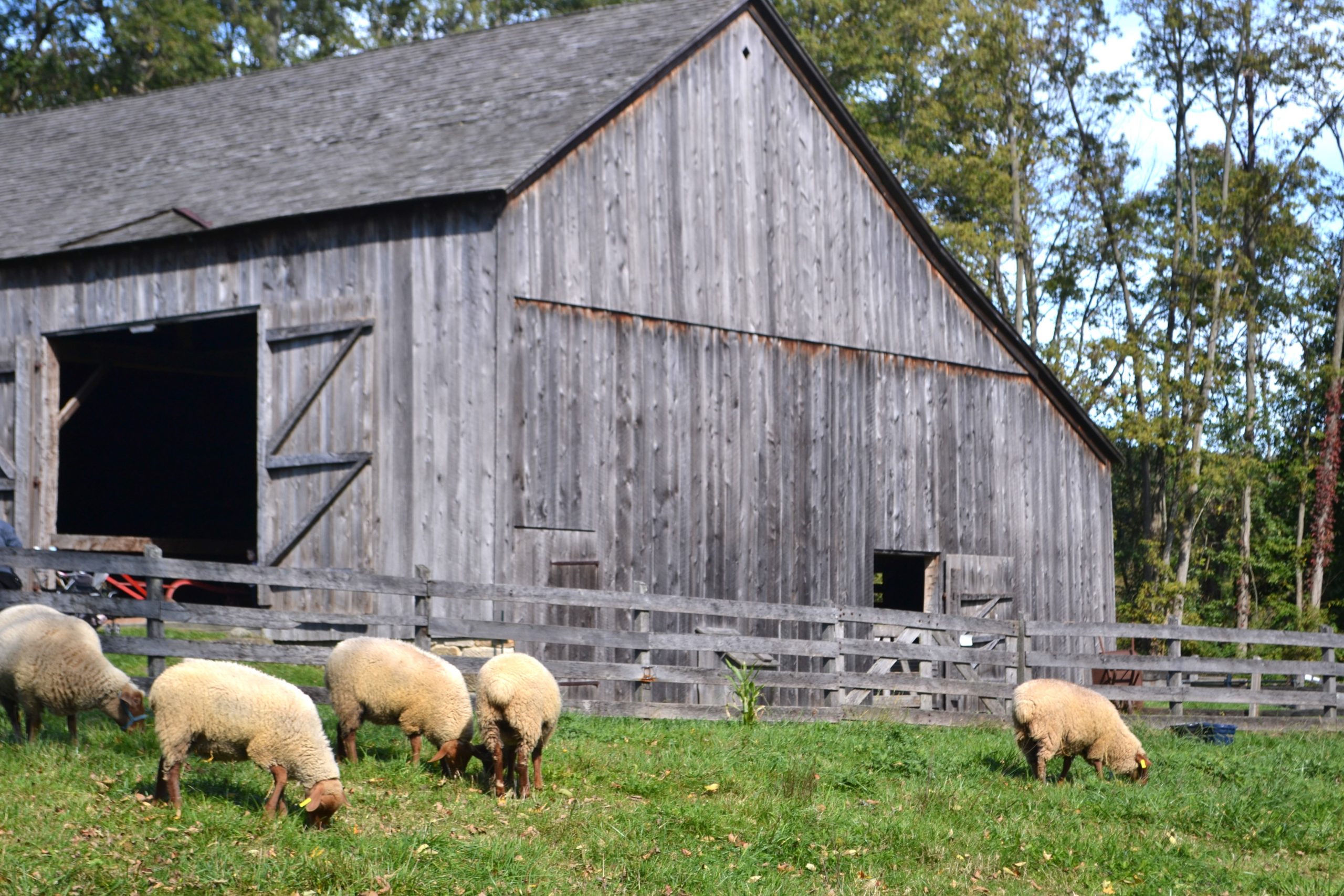
My last stop before exploring the additional structures at Wheatfield, was the old gray barn where I found several chickens, adorable sheep and cute little pigs. It was the highlight of my visit but I was also excited to learn more about 19th century farm life in Cuyahoga County, but who can resist spending just a few more minutes with my new furry farm friends.
Have you visited Hale Farm & Village? Did you attend one of its many amazing events? I would love to hear about your experience if you would kindly leave a message in the comments section below. Many thanks for reading about my fun, educational experience at Hale Farm & Village and wishing you many amazing travels!
What to See and What to Do:
Hale Farm & Village
2686 Oak Hill Road
PO Box 296
Bath, Ohio 44210
Telephone: 330 666 3711
- Admission Fee: $15 for adults ages 13 & up; $8 for children ages 3 – 12; WRHS members, active military and children under the age of 2 and younger are free
- Hours: Daily from 10AM to 5PM with the exception of holidays. Check the website before your visit as there may be special events and a change in hours depending on the season.
- Amenities: Period actors, historical sites for self-guided experiences, the Marketplace to purchase beverages and snacks, free parking, restrooms
- Scenic View: The farm animals, historical buildings
- Length of Visit: 2 – 3 hours
- Tips for Your Visit: Wear comfortable clothes because there is a lot of walking. Your ticket is valid all day, so you can leave and come back to explore the park.
Where to Stay;
The Ohio Motel
2248 N. Cleveland Massillon Road
Bath, OH 44333
Telephone: 330 659 9999
Where to Eat:
Ken Stewart’s Tre Belle
1911 N. Cleveland Massillon Road
Bath, OH 44333
Telephone: 330 666 9990
What to Read:
- The Jonathan Hale Farm, by John Horton and Herman Vail
- Edith Hale: A Village Story, by Thrace Talmon
Disclosure: Please refer to our blog disclaimer tab for more information.